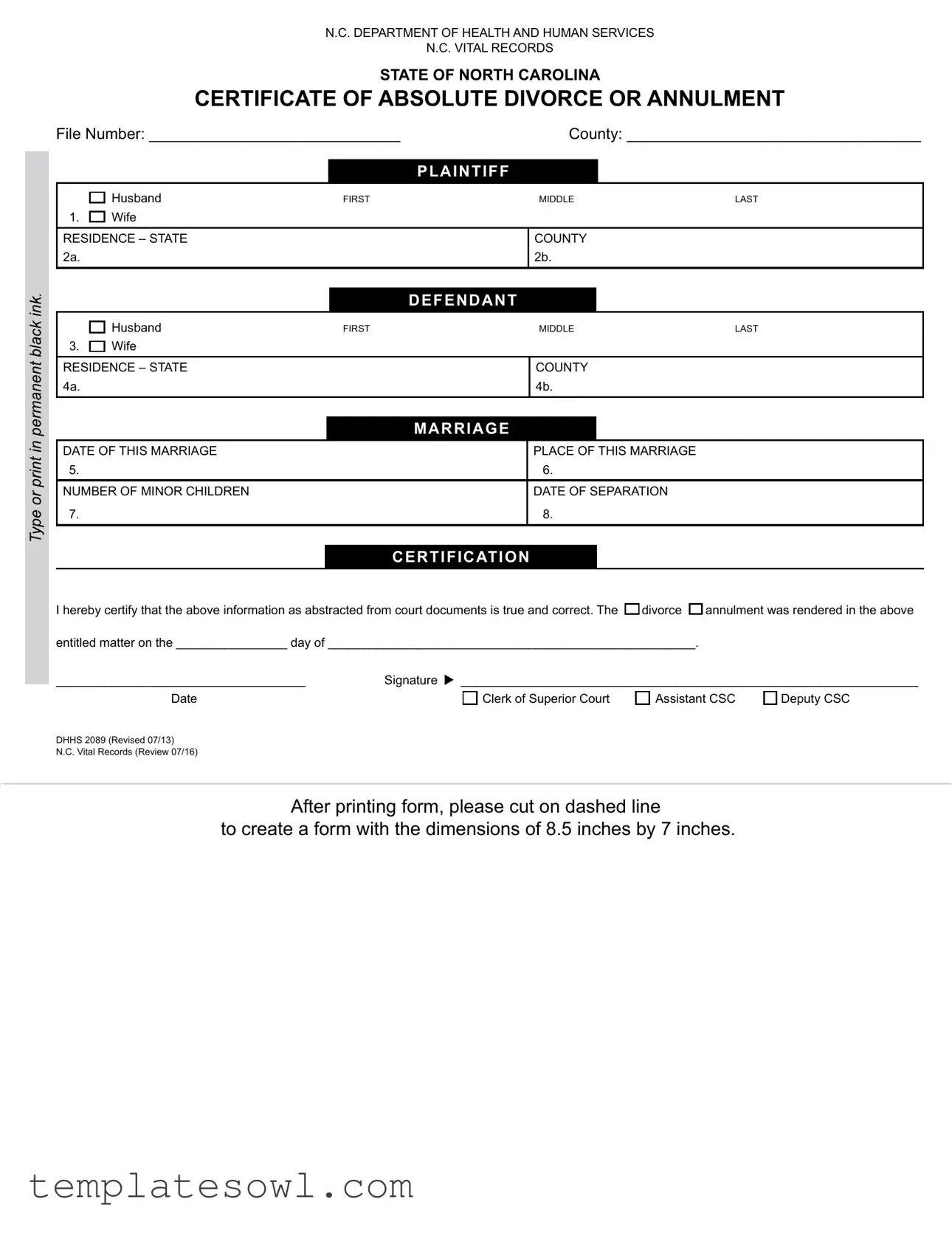Filling out the North Carolina Department of Health and Human Services (DHHS) form for a certificate of absolute divorce or annulment can feel daunting. However, making careful choices can ease this process. Unfortunately, many individuals make common mistakes that can lead to delays or complications. Here are five frequent pitfalls to avoid.
One common mistake is incomplete information. Each section of the form requires specific details about both the plaintiff and defendant, as well as crucial dates related to the marriage and separation. If any field is left blank, it can lead to delays in processing. Ensure you provide accurate names, addresses, and dates. Double-check every entry before submitting.
Another significant error involves incorrect names. It’s essential to write names exactly as they appear on official documents. Typos or variations in names can lead to confusion. For example, failing to include a middle name or using a nickname instead of a legal name could mean that records do not match. Always verify the spelling of both parties’ names carefully.
Inaccuracy concerning the marriage or separation dates is also a frequent error. Failing to note the correct dates can impact the timeline of events, which may be critical for legal reasons. Review any documentation related to the marriage and separation to ensure that the dates entered are precise and accurate. A small mistake can change everything.
People often overlook the signature requirement. The form asks for a certification signature from the Clerk of Superior Court or their designated representative, and it's easy to forget this step. Without a valid signature, the form cannot be processed. Remember, a signature signifies that the information provided is true and can hold legal weight.
Lastly, forgetting to check the form's dimensions before printing can lead to further complications. After filling out the form, you need to cut it to the specified size. Neglecting to do so can result in an improperly formatted document that could be rejected. Always follow the instructions carefully, right down to the size specifications.
By being mindful of these common mistakes, you can ensure that your DHHS form is filled out correctly. Paying attention to details saves time and helps facilitate a smoother process for obtaining your divorce or annulment certificate.


 divorce
divorce  annulment was rendered in the above
annulment was rendered in the above